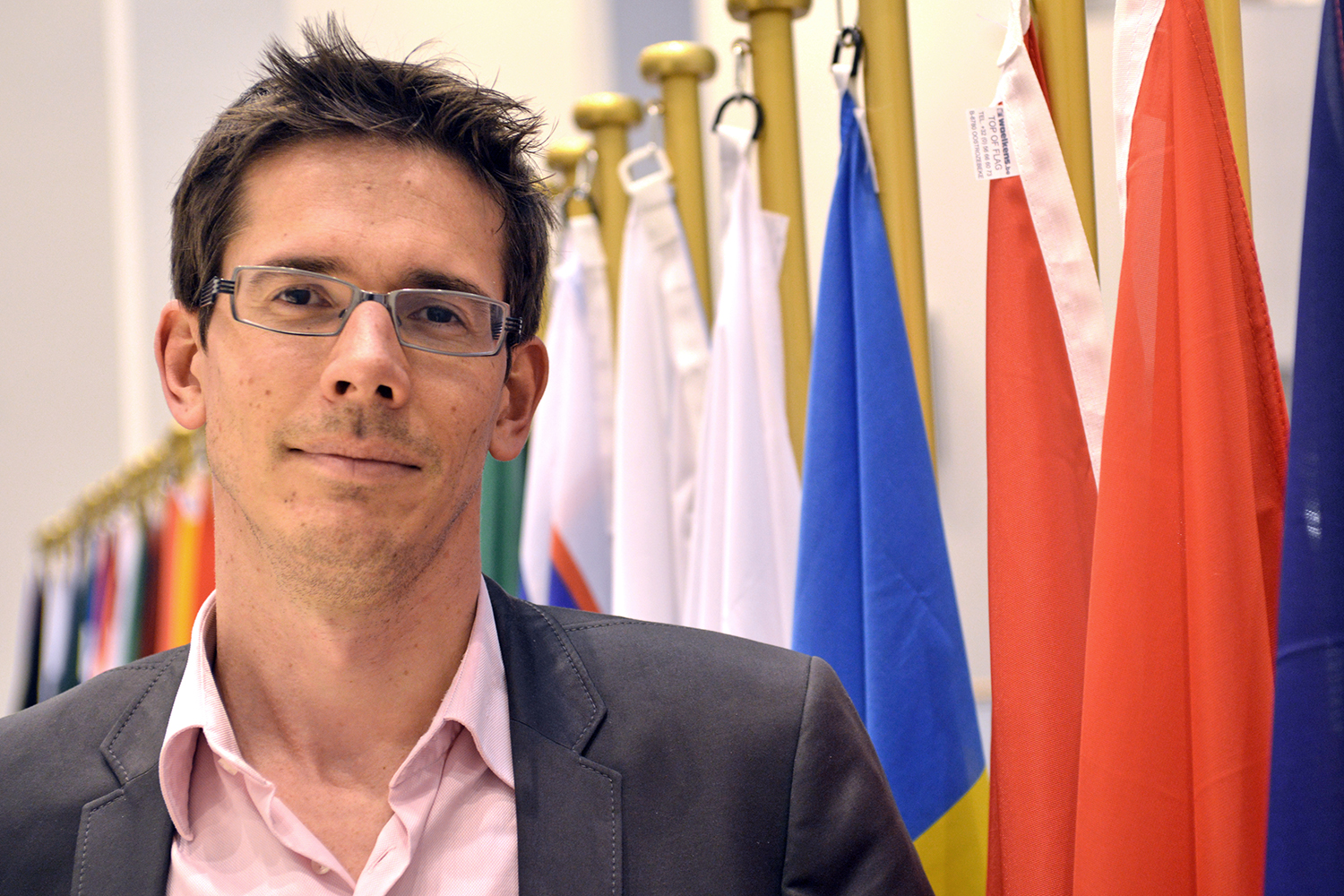Euro MP committed to climate and energy

My goal
What is the European Parliament doing to work towards the United Nations’ sustainable development goals? Euro MP Bas Eickhout (Greens/Free European Alliance) talks about his efforts on climate and renewable energy.
The European Parliament recently passed legislation on the trade in CO2 emission rights – the European key to cutting CO2 emissions by 40% in 2030 – but Euro MP Bas Eickhout isn’t jumping for joy just yet. 2018 is an important year for him. He wants to forge coalitions that will put the European Union at the leading edge of climate and energy policy. The bar for CO2 reduction needs to be raised and EU member states need to work harder at fostering renewable energy production.
Europe has handed each EU member a target for 2020; the number to beat for the Netherlands is 14%. Eickhout: “Thanks to the energy agreement, which is working towards that 14%, renewable energy is finally picking up the pace in the Netherlands. The decreasing cost of offshore wind energy means that the Netherlands can take steps forward. But the Dutch government wants Europe to stop imposing national targets after 2020. I don’t agree with that. It’s a controversial issue that’s being battled out in Europe this year: are we going to impose national targets?”
The European Parliament has decided that the share of renewable energy in 2030 needs to be at 35%, not 27%. Does that put us on the right track?
“Yes. But this is just what the European Parliament wants; the member states are still set on 27%. That means we have to negotiate with the member states. What percentage of renewable energy is Europe going to generate in 2030? That’s a debate that will have to be settled this year.”
What is that debate going to look like?
“Sweden is the only country that’s committed to the higher figure. The Germans and the Danes are open to country-specific targets for renewable energy, but the Brits and Eastern Europe aren’t on board. France’s position is still unclear, but is going to be very important. If there were a French-German axis in favour of renewable energy, then the parliament could potentially have the opportunity to move the Council of Europe more in our direction.”
At the UN climate summit at the end of this year in Poland, each country will have to present what they’re planning to do to fulfil the targets set out in the Paris climate agreement. For Eickhout, it’s crystal clear that the current promises simply aren’t enough. The question now is whether countries will commit to doing more. “Interestingly, the Netherlands is at the forefront. The coalition agreement says that the Netherlands needs to cut CO2 emissions by 55%. I’m quite pleased with that, but we need more countries that are willing to make that commitment.”
What are the levers of change that can help us achieve that?
“We (the European Greens, ed.) have ministers in Luxembourg and Sweden. Those countries will support the position held by the Netherlands. France is key here, too, because France has recently become quite ambitious. The game of generating political pressure, forming a broad coalition, and putting pressure on the European Commission will be played this year.”
And how is that Dutch 55% reduction going to be achieved?
“That’s the question. The Dutch plans rely heavily on CO2 storage, and it’s still not clear when coal-fired power plants are going to shut down in the Netherlands. If you really want to take meaningful steps, you have to get rid of coal.” The emissions trading system isn’t effective enough yet, because the CO2 rights aren’t scarce enough to guarantee a high price. That, says Eickhout, is because the bar has been set too low. He believes that the Netherlands will be able to join with several other countries to form a group of leading EU member states that impose minimum CO2 prices on themselves.
What role do you think RIVM can play in achieving these sustainable development goals?
“Climate and energy are actually moving along well. We know the indicators and the instruments, but the politics are difficult. That’s my area. For other sustainable development goals, we still need to identify concrete objectives and figure out how to measure them. That includes sustainability for our oceans, for biodiversity, for our cities and our patterns of consumption. In those areas, we need good indicators and instruments that are working towards that. RIVM can really contribute to the debate here.”
